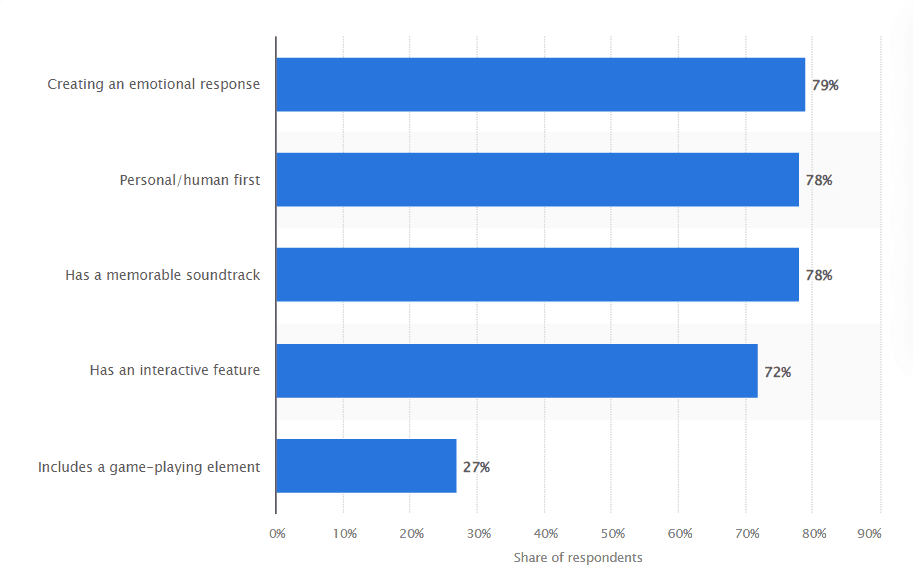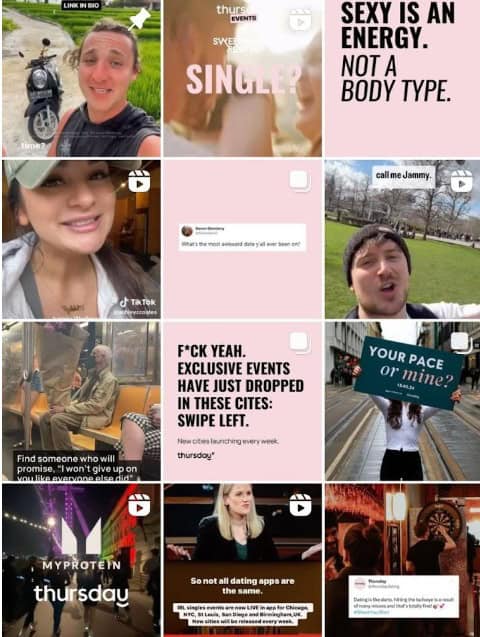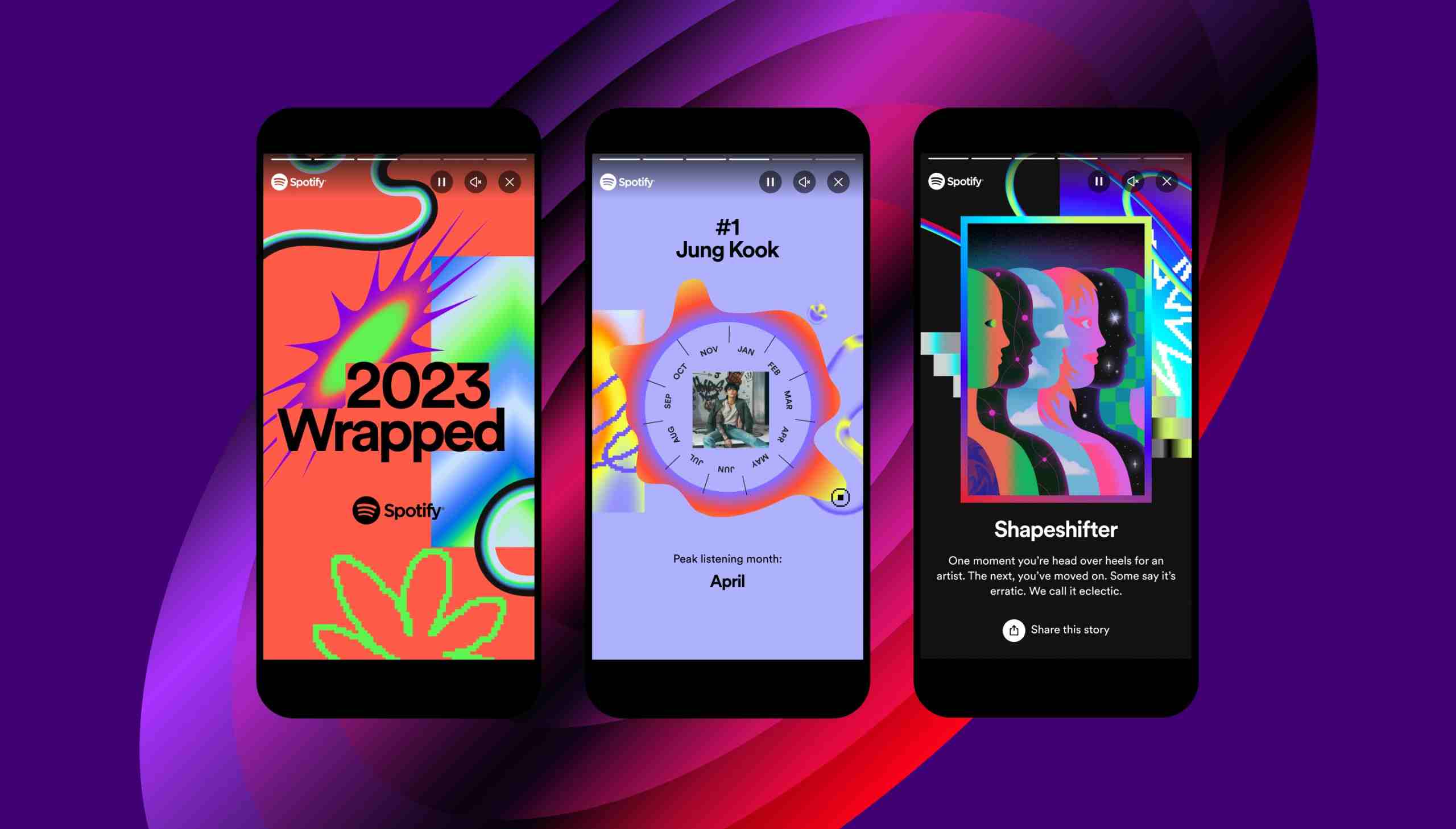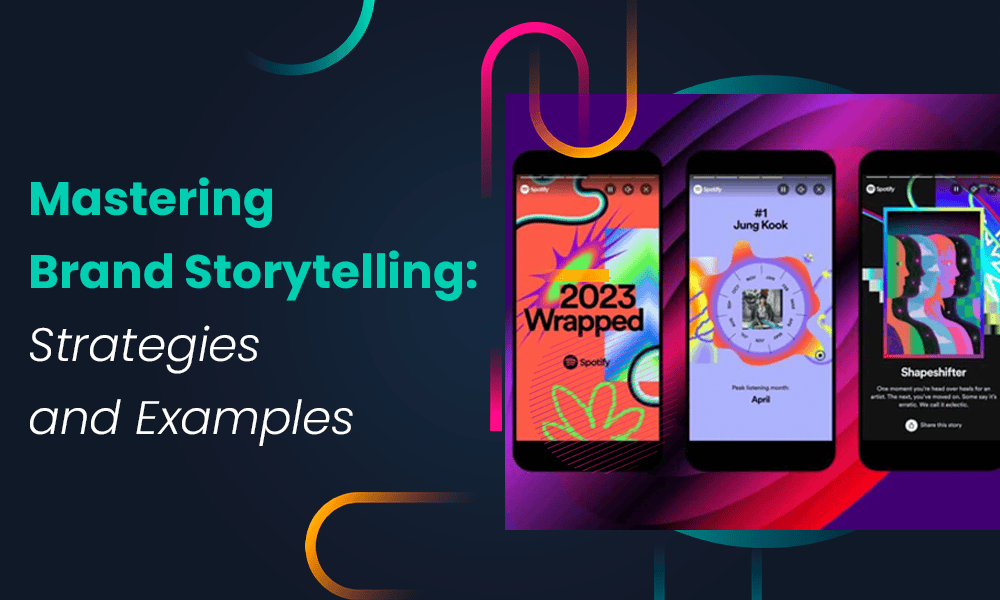According to Leapmesh, 92% of consumers want brands to produce ads that feel like stories. Ads with better storytelling can increase conversion rates by 30%.
Brand Storytelling requires creativity and analytical skills to perform better. Customers build emotional connections with brands, affecting their purchasing power. The integration of the art of storytelling plays an integral part in the branding process.
But is that all they do? How does brand storytelling impact your business? What strategies are involved in formulating your brand’s story? How can you measure its impact? Can you go wrong with storytelling?
Join us on this journey, where we will help you understand storytelling and how to integrate it into your strategy.
Table of Contents
The Importance of Brand Storytelling
We grew up with brands like Lego, Nike, Converse, Disney, etc. Our conscious mind has always associated our memories with brands. To sustain in the same market as some of the top leaders, you need the flair of storytelling.
These brands have been an integral part of our childhood. But why do we still relate to them?
These brands were marketed through our favorite cartoons and TV shows. They garnered our attention by marketing a series of highly relatable instances taken from our daily lives. Brand storytelling can act as leverage to enhance your marketing success.
For example, Tom Cruise’s character in Top Gun introduced Ray-Ban Aviator sunglasses as the next cool thing. This saved Ray-Ban by boosting the sales from 200,000 pairs per year to about 4.5 Million.

Now, let’s understand how you can use brand storytelling to stand out.
By creating an emotional connection
2023 set the tone for marketing breakthroughs. Warner Bros. Pictures released the movie “Barbie” and Mattel sales took off. According to CNN Business, the sales of Barbie dolls went up 25% after the film was released.
Mattel had the most profitable year because of the emotional connection that Barbie has built over the years. Barbie has captivated millions for decades with its brand story, and the movie has refreshed that connection.
By finding your differential factor
When someone says, “11 herbs and spices,” what’s the first thought that pops into your head? KFC, of course!
KFC is the second-largest food chain in the world. Its 11 secret herbs and spices, USP, Colonel, and mention of fried chicken instigate brand recall value, which has resulted in the brand gaining popularity. With hundreds of fried chicken brands opening up daily, KFC has stood strong because of its 11 secret herbs and spices, and the Colonel.
They built a sense of curiosity and marked their differential factor through their secret spices narrative.
By focusing on your brand identity & its values
Brand storytelling is the best way to establish a brand’s values and highlight its associated values. Take IKEA’s brand colors, for example. They are derived from Swedish heritage and tell the story of the values their brand is built upon.

Similarly, there are many great examples of how brand storytelling has conveyed a brand’s identity and values, invoking trust and recognition in the customer’s mind.
For a brand to establish its position in the market, it needs to have an emotional connection, distinguishing features, and send a clear message about its values.
Now that we understand how brand storytelling has impacted brands over the years, it’s time to dig deeper and understand the elements that contribute to creating a compelling brand story.
Elements of Effective Brand Storytelling
Effective brand storytelling involves authenticity, emotion, consistency, character & plot. Statista’s 2023 survey reported that about 78% of decision-makers responded to human-first messaging.

Before we build your brand’s narrative, let’s take a look at some of the essential elements of effective brand storytelling.
Authenticity
Creating an authentic brand story is the key to your brand’s identity. For instance, introducing a fried chicken brand means avoiding KFC’s iconic formula to maintain originality. Brands like Burger King and McDonald’s engage in playful rivalry yet maintain unique qualities that set them apart.
An effective brand story should resonate with real-life experiences, offer solutions to everyday problems, and be grounded in facts to enhance credibility and relatability with the target audience.
Character & plot
Every story needs characters and a plot. Now, an engaging brand story involves crafting characters and a plot that mirrors the experiences and challenges of your target audience, making them feel like the protagonist of their own story through your products.
The plot must address and reflect the consumer’s pain points while weaving the narrative.
Additionally, sharing behind-the-scenes stories of your brand builds credibility, allowing customers to see how your products relate to and can solve their problems.
Emotion
It’s time for some drama! Not quite literally. But every story has an emotional connection to engage the audience. We cannot be all sales-y and expect our audience to relate to our services, right? Let’s add some emotion to our brand story.
Emotion can be added as daily life instances or special occasions. This will help drive engagement to your brand and foster brand loyalty.
Consistency
Just crafting a compelling brand story is not enough to build recognition. It needs to be everywhere, accessible to the masses. You cannot expect busy working adults to relate to your brand story by only being active on YouTube. They might not be spending their time there.
The best way to reach a mass audience is to be consistent across all marketing platforms. But before you do that, make sure you organize your content according to each platform’s requirements.
In summary, build an emotional connection with the target audience, create a differential factor for the brand, and ensure that your message reaches the correct audience.
Now, it’s time for us to tackle your brand story!
Crafting Your Brand Story
While we have discussed the elements of brand storytelling, it is important to understand that this is just a manual for crafting your own brand story. Let’s take a look at how your brand can join the bandwagon!
Identify the origin
The first step is to identify your brand’s story. How did it start? Why did it start? Basically, what is YOUR story?
This will be the core weapon in tackling your brand story. Start by conducting in-depth research on how your brand came into existence. Take advantage of the details. They will help us in creating a relatable brand story. Additionally, you can work on establishing how your brand stands out in the market.
Highlight the features
How does your brand stand out? If your brand solves an important issue in daily life, it is time to dig deeper. Create an elaborate report on what problem it solves, who it is for, and what influenced you. It is always best to highlight these instances to show brand credibility.
Who’s the main character?
Remember how we talked about our audience being the main character? It is also important for us to listen to them. Draft a clear summary of the customer testimonials. This will show you how your products/services solve real-life problems. It can collectively help in building a base for your brand story.
The beginning, the middle & the end
With a base in place, it is time to build your narration slowly. In this section, we will understand the different brand story narration techniques, such as our hero’s story, conflict resolution, and visual storytelling.
Humanize the brand
To build brand loyalty and credibility, your brand should be able to resonate with the audience. As a result, your audience will feel the need to include it in their routine. This can be a great narration technique for brands contributing to our daily lives. We can show what went behind bringing this brand to life.
What problem does your brand resolve?
Another great way to narrate your brand story is through conflict resolution. Here, we show how our brand helps solve an issue or conflict. Bad breath? Use our minty fresh toothpaste! Dealing with frequent power outages? Grab our solar-charged emergency lights.
That is how we can portray our brand as the knight in shining armor, saving our target audience in distress.
Consumer psychology
It has been proven time and again that visual brand storytelling greatly impacts consumer psychology. With our generation moving towards digitalization, it is only fair to adopt the visual route to marketing our brand. It is easier for our brains to memorize information through visuals.
Now, this helps create a core memory in our audience through videos, graphics, jingles, and copy.
Listen to your customers
The most important factor in building your brand story is highlighting your target audience’s preferences. Once you have crafted the brand story from your point of view, it is time for your customers to tell theirs. Collect customer testimonials and showcase their stories to highlight how your brand played its part.
Now, this builds a fantastic brand narrative through the consumer’s eyes.
After all, it’s now their story to tell.
Strategies for Sharing Your Brand’s Story
Once we have developed our brand story, the next step is to build strategies for sharing this story. These strategies play a vital role in making your brand story accessible to a greater audience. Let’s take a look at some of them.
Content marketing strategy
It has become an important part of every brand. You cannot just post your story anywhere, anytime. You need a full-fledged plan for it. This strategy includes sharing your brand story in different ways, such as dedicated blogs about the brand story, individually published articles, videos shot on the brand story, and so on.
Social media
66.2% of the world’s population uses the internet, and 5.04 billion are on social media. It is the best place to share your brand story. But remember to be consistent on all the social media platforms. There are a lot of different ways that you can use- posts, live sessions with famous personalities, Q&A sessions, reels, TikTok, YouTube videos and so much more.
thursday, a dating app, utilized the power of social media to share its brand story and encourage customer testimonials. Their feed has real-life dating stories, fun anecdotes, and testimonials.

Email marketing
Emails have become a part of our morning routine. If you target the right audience, you can achieve great results with email marketing. Unlike social media marketing, it is more targeted and personalized.
You can build an email list and share the nitty gritty about your brand and what goes on behind the scenes. For example, Alex Cattoni, founder of the Copy Posse, runs an amazing email newsletter that talks about her story, struggles, and updates about her personal brand.
Influencer marketing
Who doesn’t love attending fun events for new experiences? Many brands host influencer events, launch parties, and brand carnivals to entice their audience. As we discussed earlier, we are easily influenced by people we know of. Brands use this as an advantage and get influencers to share stories of how the brand helped them. At times, they also have people sharing their real-life instances.
While these strategies can be a great reference point for marketing your brand story, they need to be customized according to your brand. Then, it becomes easier for you to measure the success of the brand storytelling.
Measuring the impact of brand storytelling
Now that you have crafted a brand story and implemented all the strategies, how will you know if that worked for your brand? Every step we take for our brand is to help in its recognition and increase revenue. We are all looking for different ways to make our brand successful.
Let’s take a look at some of the most important measuring tools.
Check on the engagement metrics
With the help of different key performance indicators/KPIs, keep an eye on how the brand story impacted your engagement. These include the time spent on the brand story content by your audiences, the like-share-comment on the content, and so on.
A higher numeric representation in engagement will lead to more reach and interest for your brand.
Assess the aftermath
We need to know how the brand story changed our audience’s perception of our brand. We can start by conducting various one-on-one interviews and surveys, collecting customer feedback, and analyzing the performance.
Conversion rate
Introducing a brand and sharing its story is a great way to draw attention. But it is important to know if this brought new customers and increased our sales. Analyze if the brand storytelling helped increase conversion rate and retain existing customers.
Analyze loyalty
Additionally, keep an eye out for repeat purchases, existing customers, and their referral purchases. After all, word-of-mouth marketing is still a great tool.
A/B testing
This is one of the best methods to test your story’s success. It will help you enhance your approach, refine the elements, and ultimately increase conversion rates.
With the help of these metrics, we can deduce how sharing the brand story impacted the brand’s goals. This analysis will help us in setting future targets and intentions and also result in building our brand’s perception and establishing brand loyalty.
5 Best Practices in Brand Storytelling
A successful brand story cannot be achieved instantly. Numerous factors go into perfecting it. Sometimes, we just have to take the bet. But we can learn from the wins and failures of previous brands while curating a list of what worked and what didn’t.
Here are some of the best practices that you can follow.
Be transparent
The best way to build brand loyalty is to give your target audience a complete overview of the process. They should be able to resonate personally and build a connection. Show them glimpses of your wins and losses.
Consistency is the queen
We all know that content is the king. But remember to treat consistency as equally important. Just crafting your brand storytelling is not enough. You have to consistently promote the narration and engage with your audience. Don’t post and ghost.
Setting a clear tone
Imagine watching a beautifully curated movie and then being bombarded with unnecessary plot elements. It diminishes the true essence. Be clear with the messaging that you want to project in your brand storytelling. This helps avoid burnout, clear out the chaos, and focus on one thing at a time.
Look into the details
In this era, when our attention span decreases with each passing update, brand storytelling needs to be visually appealing to your audience. Focus on all the details, use the best brand colors and catchy copy, and create a soothing image of your brand story.
Use testimonials
Customer testimonials play an integral role in the success of your brand storytelling. They invite new customers while keeping your existing customers satisfied. It also represents the success of your brand story.
Using these best practices in your strategy can yield better results. Again, make sure to tailor them according to your requirements. Don’t forget to check how they impact your brand through the metrics shown earlier.
Common Mistakes to Avoid
Risk is an important element in building a brand. There will be some hits and many misses. We make mistakes and then analyze them to avoid their use in the future.
So, what mistakes must you avoid while creating your brand story?
Ignorance is NOT bliss
Contrary to popular belief, ignorance is not bliss. In this case, we are talking about avoiding the target audience’s needs and preferences. We are building a community that allows us to create a better communication system with our audience.
Then, why should we ignore their voices? Our responsibility is to analyze their feedback and mold our brand to accommodate their needs.
There is nothing new under the sun
Authenticity is the key to building customers’ trust. While inspiration is a great way to start the thought process, using the exact principles for your brand storytelling is not recommended. Doing that might decrease brand credibility and can hamper the brand’s perception.
You do not want your audience to say, “We have seen it already!” when you share your brand story.
Unclear intentions
When you look at an ad with busy patterns, loud colors, and cluttered copy, what comes to mind? It suggests that the creator is unclear about the brand’s goals and intentions. Similarly, not having a clear idea of what goes into your brand storytelling can negatively impact its reach.
Making mistakes is important. That’s how we learn to improve our work in the next attempt. These are some of the common mistakes that can happen in brand storytelling. Note them and implement newer strategies. Experiment more with your story.
Examples of Excellent Brand Storytelling
Let us see what we can learn from some top brands who have nailed their brand storytelling.
1. Spotify Wrapped

Spotify came up with an interesting way to end our year. They analyzed our patterns throughout the year and compiled them into a fun year-end report. Last year, they amped up their brand storytelling and technology to provide a more personalized view of the report.
Spotify believes that the taste of our music is representative of our story. They had their hits and misses, but eventually, they rose to the occasion. And now, we are all waiting for our Spotify Wrapped.
2. Budweiser: “Whassup?”
Budweiser has always had a knack for storytelling through their campaigns. In the year 2020, they recreated their “Whassup?” campaign. But this time, it was more powerful. They reenacted the campaign with Uber, encouraging people to check up on their loved ones during the pandemic with the punchline — “Whassup?”
Budweiser reported an increase in sales after this campaign. The campaign resonated with its target audience and established an emotional connection.
3. Dove self-esteem project: Cost of Beauty
Over the years, Dove has established an initiative to encourage women through its Real Beauty campaign. They later launched the “Self-Esteem Project” to build confidence in beauty in thousands of women.
In 2023, Dove released a short film called “Cost of Beauty” to highlight its brand story. This film discussed the increasing mental health issues among youth due to unrealistic beauty standards. The campaign gained widespread approval and became viral across all social media platforms.
The stories of these successful brands show how effective brand storytelling can impact your business in multiple ways. They also show how brand stories help build a brand’s identity and values.
Conclusion
Brand storytelling is now an indispensable asset in dynamic marketing. It works as a bridge to connect your brand with the correct target audience and build a much-needed connection. It sets your brand apart in the saturated market and highlights its unique identity.
The journey of curating effective brand storytelling comprises many elements, such as the brand’s authenticity, character development, a relatable plot line, emotional bond, and consistency. Brands have also started inventing new approaches and using different innovations like AR/VR to curate their brand story as an experience.
In the end, it all boils down to authenticity and brand recall.
Now, it is your turn to embrace the power of brand storytelling and master it through all the practices we discussed. Start your brand storytelling journey today!
If you want an all-in-one CRM and marketing automation software for your small business, try EngageBay. You can book a demo or sign up for free to get started.
FAQ
1. What do you mean by brand storytelling?
Brand storytelling is the art of creating and communicating a brand’s essence and values to the audience while strengthening their emotional connection. The aim is to deliver instances that the audience can resonate with and increase the brand recall value. The ultimate goal is to develop a deeper bond with the target audience.
2. Why do we need a brand story?
Brand storytelling is an integral part of building a brand. It helps to develop newer consumer connections, establish brand identity, highlight brand values, and communicate with existing customers. It will act as a great tool in figuring out the target audience that resonates with the brand. Brand storytelling has become a necessity now more than ever.
3. Is brand storytelling a new concept?
No, it is not a new concept. We have been using this strategy for ages now. But yes, it has developed over the years. With the onset of technological development, brands have been seeking out newer approaches to establish a unique brand story.
4. How can you present a brand story innovatively?
The strategy to develop effective brand storytelling is ever-changing. Keep an eye on the trends and stay updated on the recent technological developments. Don’t shy away from taking advantage of Artificial Intelligence and social media strategies. You can experiment with different styles to suit your brand style. The only important thing to remember is to be authentic.
5. When is the best time to introduce the brand story?
It is never too late to jump into brand storytelling. While it is advised to promote your brand story at the initial stage, you can still build new campaigns to build your brand narrative and values.
